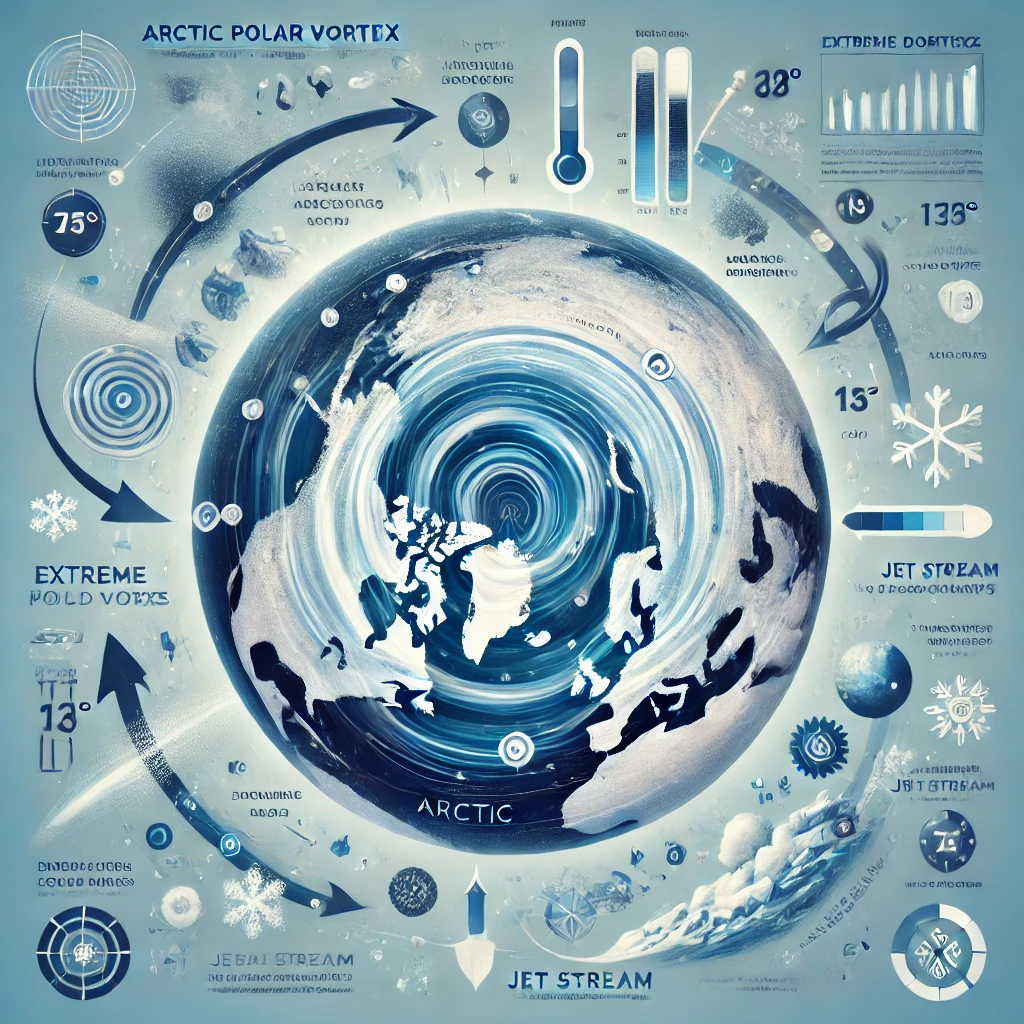The Arctic polar vortex is a counter-clockwise spinning mass of cold air high above the Arctic. This weather phenomenon changes with the seasons, expanding and contracting as temperatures shift. When the vortex stretches, splits, or dips southward, it brings frigid Arctic air to regions far from the North Pole.
How the Polar Vortex Affects Weather
When the polar vortex weakens or shifts, cold air can sweep across the United States, plunging temperatures and even reaching areas like the Gulf Coast. These icy conditions can be dangerous. Frostbite can occur on exposed skin within minutes, and prolonged exposure can lead to hypothermia. In 2019, at least 21 people died due to extreme cold linked to the polar vortex. Similarly, in 2021, Texas experienced deadly cold as Arctic air surged southward.
The polar vortex operates in tandem with the polar jet stream, a fast-moving current of air that circles the globe. This jet stream, located about 30,000 feet above the ground, helps stabilize the vortex. However, when it weakens, the vortex can become unstable, leading to dramatic weather shifts. Peaks and troughs in the jet stream, known as Arctic oscillations(AO), can push cold air south and allow warm air to move north.
Climate Change and the Polar Vortex
Climate change may be altering the behavior of the polar vortex, though this is an area of ongoing research. The Earth is warming faster at the poles than in mid-latitudes, which reduces the temperature difference that drives the jet stream. This weakening could make the polar vortex more prone to disruptions.
A 2018 study linked warmer Arctic temperatures to cold weather outbreaks in the eastern United States. Another 2021 study suggested that Arctic warming might increasingly destabilize the polar vortex itself, further affecting weather patterns.
Conclusion
The Arctic polar vortex plays a critical role in shaping winter weather across the globe. As scientists continue to study its interaction with climate change, understanding this dynamic system remains essential for preparing for its potentially severe impacts.
Reference- Nature, National Geographic, Science, NOAA website, The Times
